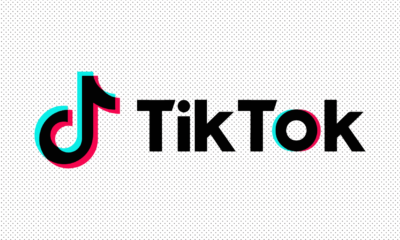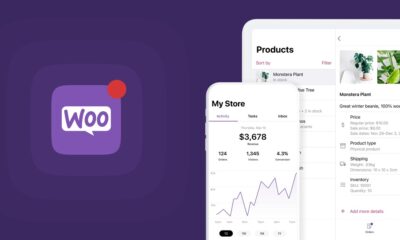General
PVC Market: How You Can Thrive Your Business in This Domain


The PVC market is one of the most reliable and predictable markets of the day. From the view-point of a new entrant, the PVC market holds promise and a surety that the demand wouldn’t plummet any time soon.
According to a recent PVC market analysis, the global market for PVC products (both raw material PVC and finished products of PVC) is growing at a stable CAGR of 4.7 percent. The global demand for PVC products is expected to amount to $46.6 billion by 2022.
If you are planning on entering the PVC market, be it a part of your diversification plans or a new venture launch, it is crucial to understand how the market works and which factors affect the PVC demand.
The Producers of the PVC Market:
China is the largest producer of PVC plastics, closely followed by countries in North America and Western Europe. A significant number of PVC production plants in China have recently been shut down due to their unsustainable production processes, ecological footprint, and inability to scale to meet demand. In terms of the single biggest producer, Japan’s Shin-Etsu organization is the largest PVC producer, followed closely by Formosa, Occidental, and Solvay.
The Consumers of the PVC Industry:
The Asia Pacific region is the biggest consumer of PVC products, primarily due to a higher concentration of developing countries in this region. The highest demand for PVC comes from the construction sector for products such as pipes, floor-boards, roof fixtures and frames, light fixtures, wallpapers, sheets, window fixtures, etc. The developing countries are focusing a great deal on construction and infrastructure to keep pace with their growth rate and to ensure they can sustain the development.
To sustain the development happening currently, developing countries need to provide the requisite infrastructure, such as roads, commercial buildings, industrial spaces, residential spaces and arcades to house the workforce, general facilities like hospitals, and cultural centers.
However, across the world, there are maintenance projects for pre-existing infrastructure. These projects involve a considerable amount of construction for activities like sewage system replacement and up-gradation, mending the wear and tear in infrastructure building and roads, replacing or up-grading water supply systems.
It is evident that the construction activities will only intensify in the coming years, and hence the demand for PVC products will increase exponentially. There is enough space within the PVC industry to accommodate both existing suppliers and new entrants.
Engagement Models in the PVC Industry:
For a new business, it is vital to know how the suppliers and the buyers communicate with each other in the respective industry.
In the PVC industry, buyers prefer to conduct business directly with a supplier, ruling out any intermediaries. Consortium buying, when two or more buying organizations combine their requirements to source the individual products they need at a discounted rate due to the (now) higher amount of PVC required, is an accepted practice in the PVC market but is rarely seen in the PVC resin market sector.
CPG companies prefer to hire converters to perform the final packaging as well instead of doing it themselves. Outsourcing the packaging of final products to the converters allows CPG companies to focus better on their core business and enhance capabilities to cater to the soaring demands. CPG companies also avoid consortium buying in the PVC resin markets.
Many suppliers negotiate tie-ups with major clients from consumer sectors like construction, medical research, etc. to ensure a constant source of demand apart from the market-led demand. In such relationships, suppliers get a constant and reliable demand and hence, revenue source. On the other hand, the buyers get better volumes of PVC products at a discounted rate.
There are three major types of contracts that are prevalent in the PVC industry:
- Market Price Contracts: A market price contract, commonly known as a minimum price contract, is a forward contract that guarantees that a buyer will receive the products at the market price for said products at the time of signing the contract. Such arrangements protect both the seller and the buyer from price fluctuations in the market.
- Fixed Contract: In a fixed contract, the time taken to complete an order or the resources utilized thereof are not taken into account while settling the payment. Instead, the total cost of the order and the supplier’s margins are fixed in advance. Such a contract protects the seller from market fluctuations.
- Contract Revision: The PVC industry primarily uses quarterly contracts. Hence the contracts are revised quarterly to account for any significant price changes that might have taken place during the quarter.
Conclusion:
The PVC industry is booming and presents lucrative opportunities for new entrants. The industry standards are reliable and do not fluctuate regularly, hence providing a sense of stability and security in a rather dynamic market space. If you are looking at entering the PVC market, now is as good a time as ever.



 General2 months ago
General2 months agoWhat Is Smart Construction? A Beginner’s Guide



 Technology1 month ago
Technology1 month agoHow to Send WooCommerce SMS Notifications for Orders





 Technology1 month ago
Technology1 month ago7 Essential TikTok Metrics to Track for Higher TikTok Views in 2025

 Model3 weeks ago
Model3 weeks agoTiffany Stratton: Biography, Wiki, Age, WWE Career, Net Worth, Before Fame, Boyfriend



 Technology4 weeks ago
Technology4 weeks agoTop 5 Tips for Using File Uploads in Your WooCommerce Store Efficiently

 Technology3 weeks ago
Technology3 weeks agoWhy Airlines Are Using Virtual Reality Services for Pilot Training



 General4 weeks ago
General4 weeks agoThe Hidden Costs of a DUI & How a Lawyer Can Help You Avoid Them





 Technology3 weeks ago
Technology3 weeks agoExploring TikTok AI: My Experience Making a Video With Only Artificial Intelligence




You must be logged in to post a comment Login